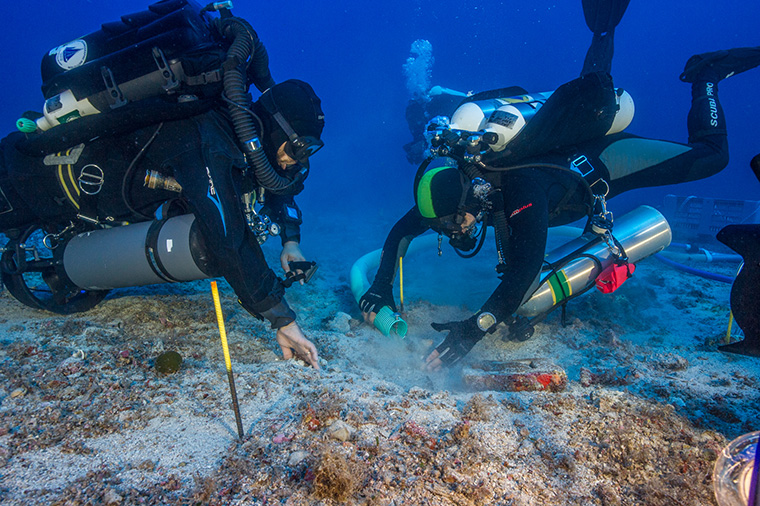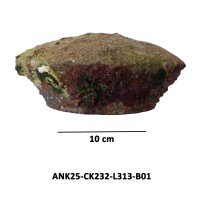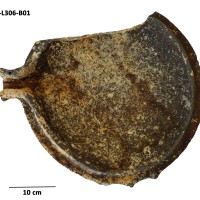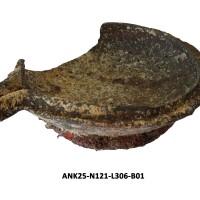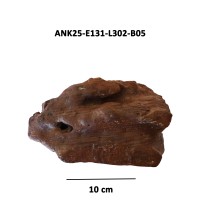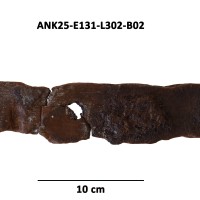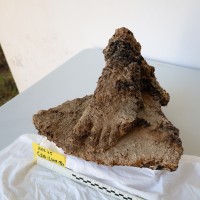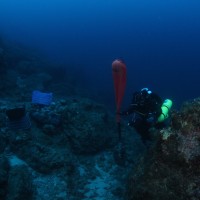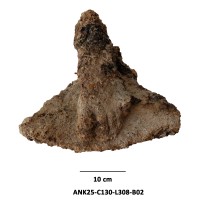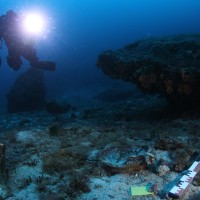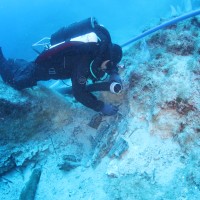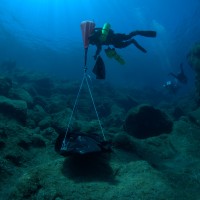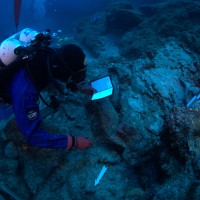For one more year, the Aikaterini Laskaridis Foundation participated in the expedition of the Antikythera shipwreck, a mission prepared by the Foundation and carried out by the Swiss School of Archaeology in Greece under the supervision of the Ephorate of Underwater Antiquities of the Ministry of Culture and Sports. The Aikaterini Laskaridis Foundation once again received strong support from the Coast Guard / Hellenic Coast Guard by having a team of technical divers Submersible Missions Unit, which significantly enhanced the overall effectiveness of diving operations.
During this year’s last excavation period of a grand project that has been underway since 1900 and has been supported by the Aikaterini Laskaridis Foundation since 2016, a number of new important findings emerged.
Particular attention was paid to the recovery of the fragile modular wooden remains of the ship‘s hull discovered in 2024, which brought to light evidence of the ship’s construction, which seems to have been designed following the “shell first” technique, where the outer hull of the ship is initially constructed, before the inner members were placed. This method prevailed in the Mediterranean area from the 4th to the 1st century BC.
Of unique importance are the fragments of a statue of a naked male figure, in a contrapposto position, in a fragmented state, as well as many other fragments, which were discovered and documented on the spot after the removal of a rock. With the exception of a marble brick that preserves the remains of the left lower leg of the statue, of life-size, it was not possible to recover the fragments due to their entrapment in very harsh marine agglomerations.
Furthermore, amphorae of Chian origin in two different areas of the shipwreck reveal a greater typological variety than had been recorded on the basis of research so far. To the ceramic finds, a clay ibadium (basin with a bowl), a vessel for mashing and mixing food, is added, offering valuable information about dietary practices and daily life on board.
In terms of diving practices and documentation, as in 2024, the use of closed-circuit regulators with a gas mixture improved the efficiency and safety of diving. Underwater surveys were monitored and coordinated in real-time thanks to remotely piloted underwater vessels from Hublot Xplorations. In addition, the field laboratory was reinstalled in the settlement of Potamos, which allowed preliminary on-site analyses (e.g. for wood species), while the progress of the excavations was documented by the creation of three-dimensional photogrammetric models. In addition to the drawings and photographs of the recovered objects, the data was integrated into a geographic information system (GIS). The documentation will be, in combination with the results of previous missions, the basis for detailed analyses.
The research team
The research program was directed by Dr. Angeliki G. Simosi (Honorary Curator of Antiquities of the Ministry of Culture) and Prof. Lorenz E. Baumer (University of Geneva). The on-site supervision of the works was carried out by Dr. Patrizia Birchler Emery (University of Geneva), the diving architect-engineer Aikaterini Tagonidou. The supervision in the field from the point of view of Underwater Antiquities was the diving craftsman, Athena Patsourou. Alexandros Sotiriou (associate researcher at the University of Geneva) was responsible for the organization of the field research. The specialized documentation was done by experts from the University of Geneva, while Hublot Xplorations provided significant technical support. The mission was coordinated by Yiannis Bitsakis (University of Geneva and Nereus Research Foundation).
Partners and sponsors
Swiss watchmaking Hublot (official diving watch, financial, technical and scientific support)
Aikaterini Laskaridis Foundation (technical and financial support, academic associate in Greece)
Nereus Research Foundation.
Telecommunications services are provided by COSMOTE, which covers the area of the wreck excavation and the island with 5G and fiber optic networks with 5G.
Thanks
The research team would like to thank the Ministry of Culture, its services and the Ephorate of Underwater Antiquities, as well as the Minister, Dr. Lina Mendoni, for her uninterrupted and substantial support to the research program. He also thanked the Coast Guard for its contribution. As every year, the support and hospitality of the Mayor of Kythera and Antikythera, Efstratios Charchalakis, the President of the Local Community of Antikythera, Georgios Charchalakis, and the residents of the island is particularly important.
